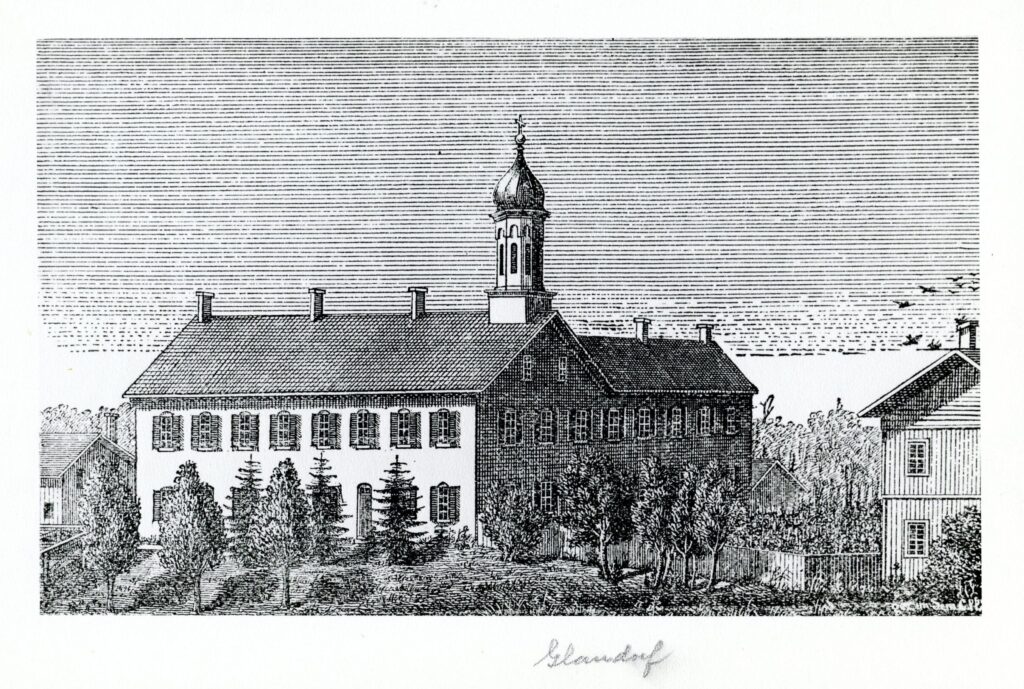The Pioneer Sisters of Glandorf and Maria Camp, Ohio
Sisters of the Precious Blood, Dayton, OH
In 1834, Mother Maria Anna Brunner, a deeply faithful Catholic, widow, mother of six, and beloved godmother to twenty children, became the Foundress of a religious Community. She, along with two young women working in the seminary castle in Switzerland, became the nucleus of the Sisters of the Precious Blood whose Central House is today in Dayton, Ohio. It was in 1844 that three Sisters from the Swiss community first came, with the Missionaries of the Precious Blood, to teach and minister to the German immigrants who had settled in northern Ohio. This group of three Sisters was the first presence of the Sisters of the Precious Blood in the United States. Eventually, at its peak, the Community would grow to more than 800 members.
Two of the earliest convents where the Sisters ministered were near Glandorf, Ohio, about 65 miles southwest of Toledo. Father Francis de Sales Brunner, Mother Brunner’s son and the Sisters’ spiritual guide, in 1848 purchased 120 acres three miles west of the village of Glandorf. He intended to build a mission house or school on the land; however, the people in Glandorf asked the Sisters to open a school closer to the center of the village near their parish. Father Brunner then bought five acres near the parish church, and in the fall of 1848, seven Sisters opened a school. Because their convent was still under construction, they lived in a small log hut given to them by the village blacksmith. In July 1849, 20 Sisters moved into the newly constructed convent and began night hours of adoration in the chapel dedicated to Mary at the Holy Sepulcher.
In 1850, several Sisters lived in a log cabin on the 120 acres purchased by Father Brunner. By 1852, a new convent was built for them, and they began night hours of adoration in the chapel dedicated to Our Lady of Good Counsel. The Sisters in Maria Camp, as this area came to be known, helped the teaching Sisters in Glandorf to become self-supporting. Between the two convents, the Sisters worked in a variety of ministries. In addition to teaching and around-the-clock care of orphans, the Sisters cultivated their own farmland, grew their own produce, kept bees for pollination and honey, made their own clothes and shoes, gave music lessons to local children, and made altar linens and bread for the celebration of Mass. All the while, the Sisters prayed night hours of adoration before the Blessed Sacrament in both chapels. Through the convent’s duration over 100 Sisters lived and worked in the Glandorf area.
Because of the sacrifice and resilience of the early pioneer Sisters, the Community would continue teaching in Glandorf until 1996, almost 150 years after their arrival. Thousands of children benefited from their “life-giving, reconciling presence in our fractured world.”

